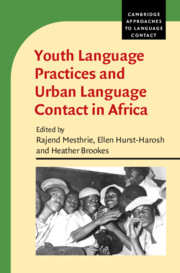Background: In June 2019, the Maryland Department of Health (MDH) was notified of a hospitalized patient with Candida auris bloodstream infection. The MDH initiated a contact investigation to identify additional patients with C. auris colonization. Many of the contacts had been discharged home from the hospital and were therefore not available for screening. Healthcare facilities in Maryland, Virginia, and Washington, DC, submit patient data to a regional health information exchange (HIE) called the Chesapeake Regional Information System for our Patients (CRISP). CRISP includes a notification system that alerts providers when flagged patients have healthcare encounters. We aimed to use this system to identify discharged C. auris contacts on their next inpatient encounter to rapidly screen them and to detect new cases. Methods:C. auris contacts were defined as patients located on an inpatient unit on the same day, receiving wound care from the same team, or having a procedure in the same operating room on the same day as the index patient or any patients subsequently identified as having C. auris infection or colonization detected either during the normal course of clinical care or through screening. Contacts who remained hospitalized were screened during inpatient point prevalence surveys (PPSs). Contacts discharged to postacute-care facilities were screened by facility staff. Contacts who had been discharged home were flagged in CRISP, and MDH staff received CRISP encounter alerts when these patients were readmitted. MDH staff then contacted the admitting facilities to recommend screening for C. auris. Axilla and groin swabs were collected and tested by rt-PCR at the Mid-Atlantic Regional Antibiotic Resistance Laboratory Network laboratory. Results: As of October 8, 2019, 4,017 contacts were identified. Among these, 936 (23%) contacts at 56 healthcare facilities (33 acute-care hospitals and 23 postacute-care facilities) were screened for C. auris, and 10 patients with C. auris colonization were identified (1.1% of contacts who underwent C. auris screening). Of these, 6 (60%) were identified through CRISP notification and 4 (40%) were identified by PPSs conducted in acute-care hospitals. Conclusions: In this ongoing C. auris outbreak, a large proportion of colonized patients was identified using an electronic encounter notification system within a regional HIE. This approach was effective for identifying opportunities to screen contacts at their next healthcare encounter and can augment other means of case detection, like PPSs. HIEs should incorporate mechanisms to facilitate contact tracing for public health investigations.
Funding: None
Disclosures: None




